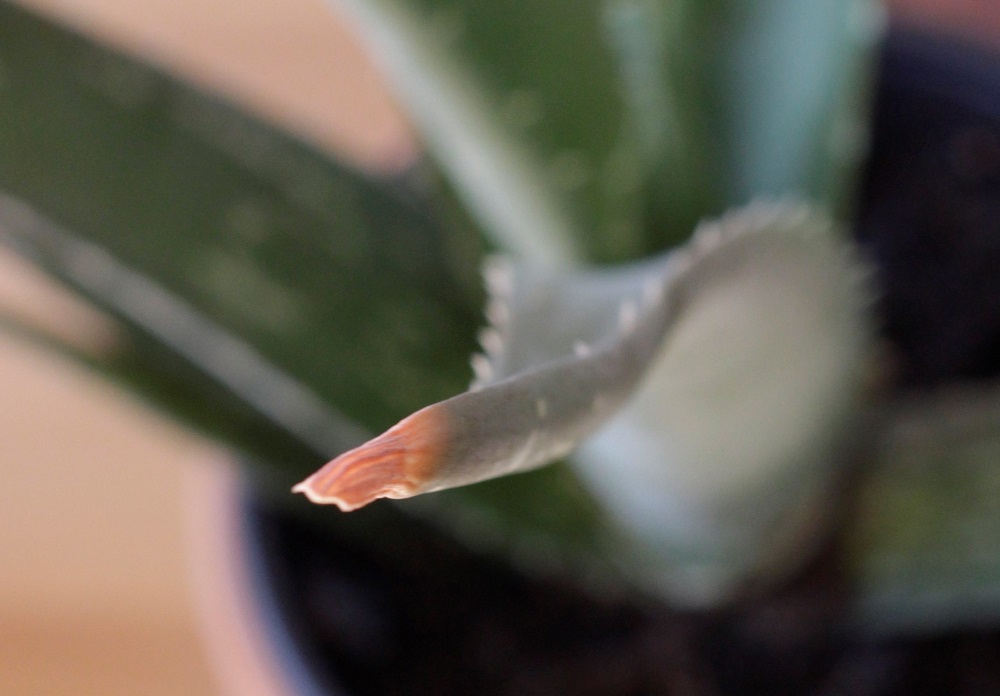
If your aloe vera gets brown tips or leaves, you've come to the right place.
We explain the possible causes of the plant's brown leaves and tips so that you can easily find out where the brown spots are coming from.

We explain the possible causes of the plant's brown leaves and tips so that you can easily find out where the brown spots are coming from.
As a first step, it is important to find out whether yourAloe Verathe tips or leaves are brown. This is the only way to find out what your plant doesn't like or is missing and react accordingly. Unfortunately, many guides do not make this distinction. The result is incorrect measures that further worsen the condition of the plant or even cause the plant to die completely. We speak of brown tips when only the top end of theAloe Veraleaf turns brown and starts to curl up. Make sure that the rest of the plant has no brown spots and does not appear mushy even when light pressure is applied to the leaf. If this is the case, your aloe vera does not have brown tips, but brown leaves.
Causes of brown tipsCauses of brown leaves Water shortage
If only the tips of yourAloe Verabrown is a lack of water. It is best to water the plant a little more in future. However, be careful not to overwater and cause waterlogging. You can find out how to water an aloe vera correctly here. If you are convinced that you have watered the aloe vera enough in the last few weeks, you may have moved it too quickly. Move the plant to a place with a little less sun. If you would like to find out more about the ideal location for an aloe vera, you can find an article about it here.
Too much heat or sun
Another possible cause is too much heat or sun. This is particularly likely if the plant has been standing in the blazing midday sun for a long time over the past few days.
However, the discoloration and drying of the tips will not harm your aloe. It is used to such conditions and adapts to the strong sunlight through the discoloration. However, if you want to prevent this
that this happens, move the plant to a place that is in the shade at midday.
Here's what you can do about it:
Spray the plant with a little water 1-2 times a day. This prevents the tips of the leaves from drying out so quickly. You can find such spray bottles quite cheaply on Amazon, for example.
View water spray bottles on Amazon*
If the leaves of your aloe vera turn brown, this is not necessarily a sign that the aloe vera is in a bad way or that care mistakes have been made. If the leaves turn orange-reddish after a change of location to a sunnier spot (e.g. after winter), this is a normal reaction of the plant to the abundance of sunlight and a natural protective function. The leaves of the aloe vera do not become mushy, but retain their structure and hardness. If the leaves become soft and appear rotten, this is due to one of the following reasons:
Too much water
Overwatering of the plant and the resulting root rot would be possible. This is particularly likely if the substrate, i.e. the soil of the aloe vera, has not been dry on the top in the last few days.
You should do that now:
location too dark
If you have not watered the aloe vera too much in the past few days, it may not be getting enough sunlight.
Move the aloe vera to a location with a little more light. However, make sure that you do not place the plant directly in full sun, but gradually accustom it to a brighter location.
Cold shock
If your aloe vera has been standing outside and the temperatures have fallen sharply during the night or there has even been frost, the brown leaves are the result of a cold shock. You can move your aloe vera to a warmer location, but as a rule the plant can no longer be saved.
If the tips of your aloe vera turn brown due to too much heat or too little water, you should not cut them off, but simply leave them on the plant. The plant will only lose more moisture through the cut and the new leaf end will turn brown again.
If the leaves are so muddy that they bend, you should definitely remove them. You should also consider changing the substrate if you can rule out the possibility of the leaves turning brown due to too little light or a cold shock.
You should not cut off the tips of the leaves. Your plant has probably received too much sun or has not been watered enough. Move it to a slightly shadier spot and your aloe will recover wonderfully.
If the plant is moved abruptly to a location with considerably more light, this is a completely normal reaction of the aloe vera to protect itself from the strong sunlight. As long as the leaves do not become soft, there is no reason to change the location of the aloe vera. The plant may no longer look as lush, but it is still healthy.
We hope we have been able to answer your questions and help you with this article.
If you would also like to help us, please leave a review or take a look at our Pinterest account. There are always great DIY instructions on the subject of plants.
